Achilles Injuries and Orthosis Options
by Colleen Lum LVT, CCRVN, CCFT
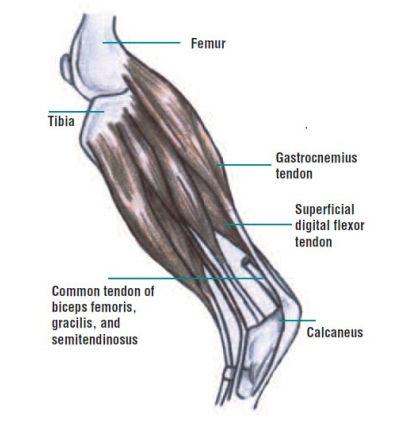
Many of us have heard of an Achilles tear or injury occurring mostly in professional sports, however it is something that can also occur with our canine and feline counterparts as well.
The Achilles tendon is comprised of five different muscle tendons (Figure 1).
- If all five tendons are torn, the pet’s hock and toes are flat on the floor (See Figure 2)
- If only some are involved, the hock is flat on the ground and toes are curled (See Figure 3)
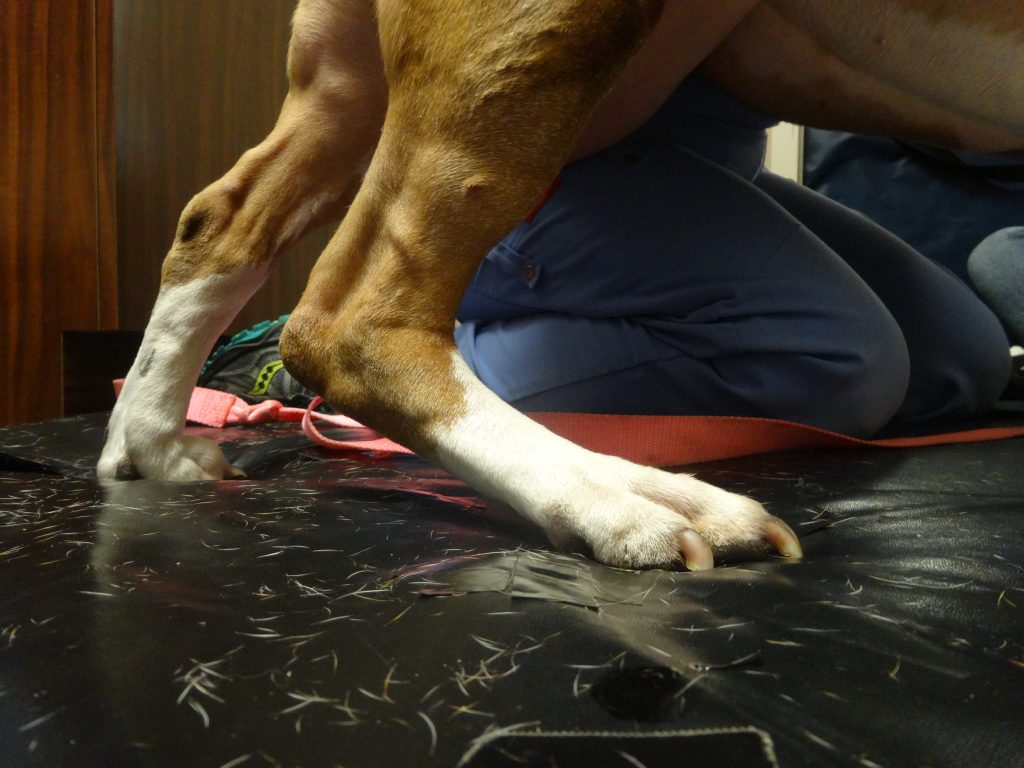
As you can imagine, once this happens, there is inflammation within the torn tendon and/or muscle. This can cause pain directly and also trigger secondary discomfort in other areas that the dog has to now use in order to compensate (other limbs and back). So what do we do?
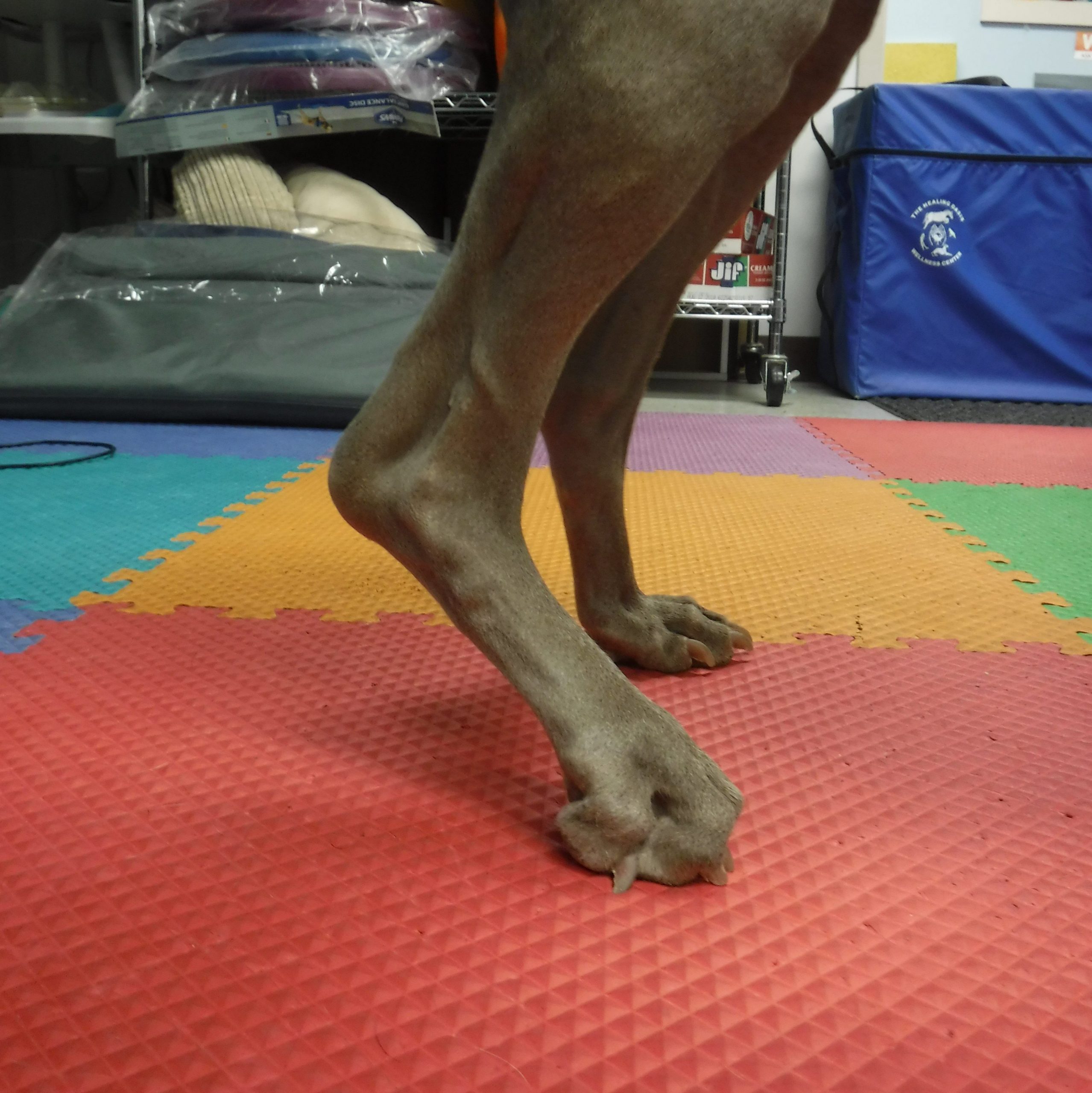
Treatment Options
A majority of our patients may pursue surgery if that is recommended, depending on the type of injury sustained. In some cases, they may be casted and fitted for an orthotic device before surgery so that a cast/bandage post-operatively will not be necessary. We typically work with the referring surgeon on when the most appropriate time to do this is. In other cases, surgery is not pursued and the injury is completely managed using an orthotic device.
Achilles Orthotics
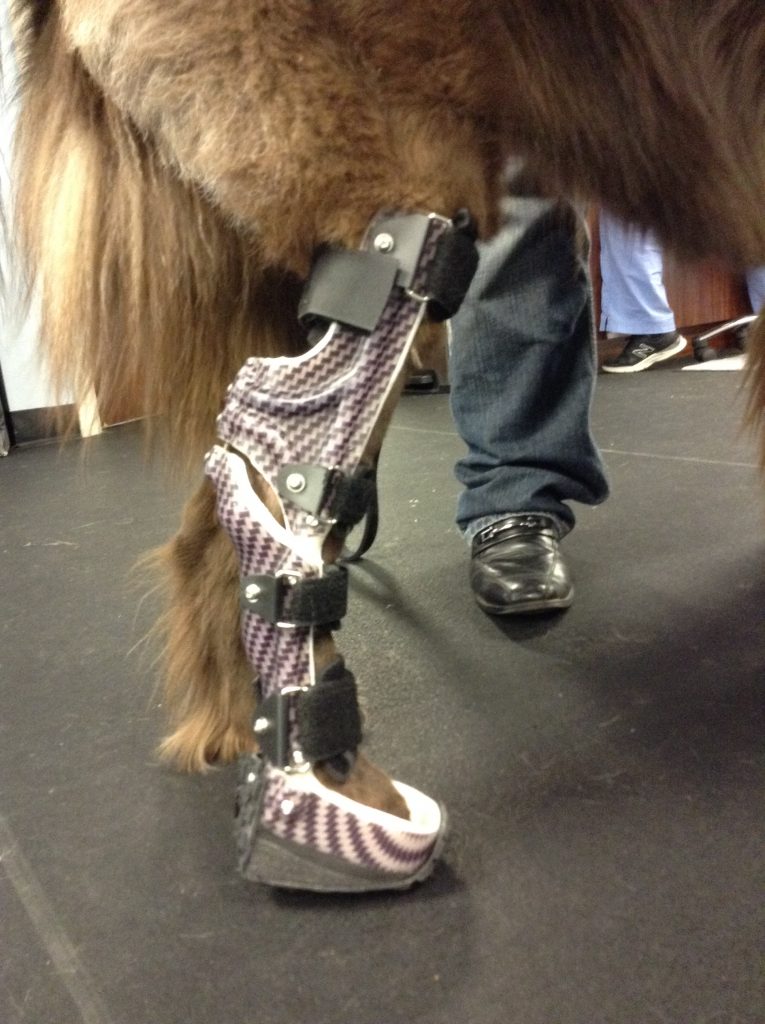
A custom orthotic device allows immobilization of the joint and prevents tension on the Achilles tendon during the healing phase. This device is designed to be worn 24 hours a day with a few short monitored breaks out of the device to be allowed during the first two weeks after the fitting. The breaks are designed to monitor the skin during the initial wear period. Think of wearing a new pair of shoes and the increased chance of developing a blister or rub mark. It is the same with our pets when wearing an orthosis or prosthesis and if not caught early enough, may require the pet to be out of their device until the skin heals. This would entail further activity restriction at home until re-introduction of the device could be pursued.
Typically during the breaks out of the orthosis, we also recommend that your pet is restricted since now their Achilles tendon is no longer being supported. This could easily be re-injured if they were to run, jump or even bear weight. Once your pet has acclimated fully to the device, activities such as long walks and off leash activity may be allowed at the discretion of our rehabilitation veterinarian.
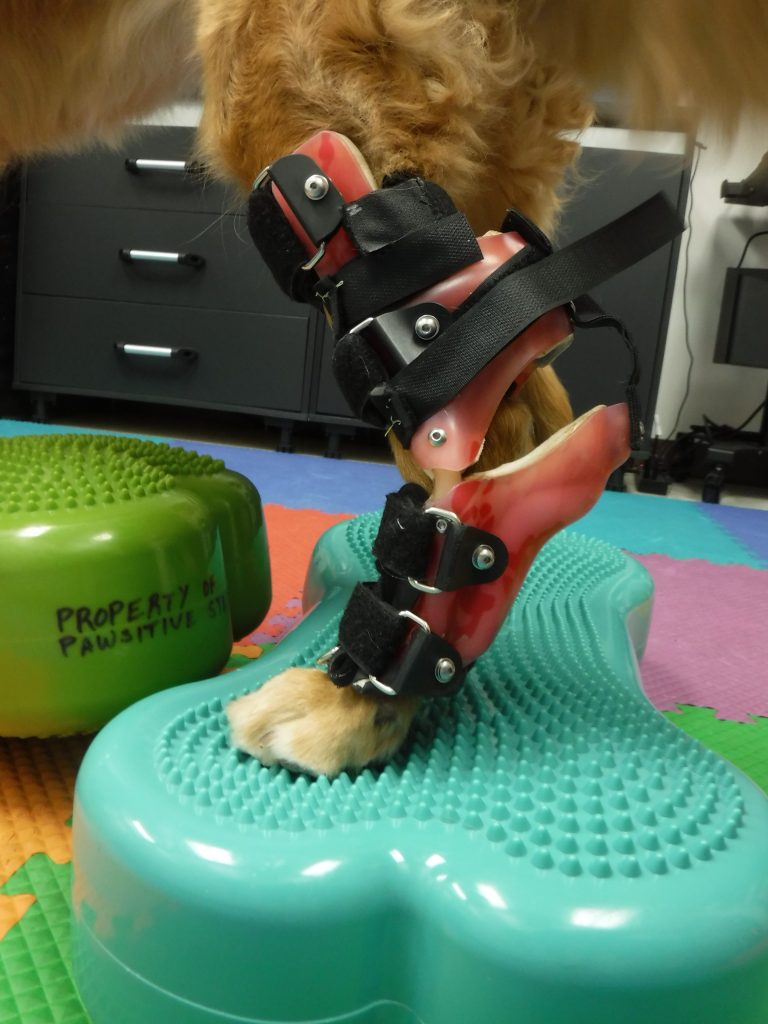
After a required amount of healing is accomplished, we slowly allow for more movement in the flexion portion of the device. This allows us to load the tension on the tendon gradually so that we have control on how much force is placed on it, and therefore not re-injure or re-tear the tissue. We also focus on exercises that help target the musculature during this time, which will get more challenging as your dog progresses through the orthosis program. We recommend that these exercises be performed at home as well as during their visits here. There are some movements that will be limited due to the presence of the device, as expected.
Return to Function
Once full healing of the tissues has taken place (usually confirmed with a musculoskeletal ultrasound), the device can be made in to a sports brace to use during heavy periods of activity. The sports brace modification may be recommended by the surgeon or rehabilitation veterinarian depending on the level of activity your dog is used to or if you have an canine athlete.
The estimated time for average patients from fit to graduating out from the device (or being transitioned into a sports brace) is dependent on the type of injury, age of patient, level of activity, etc.
